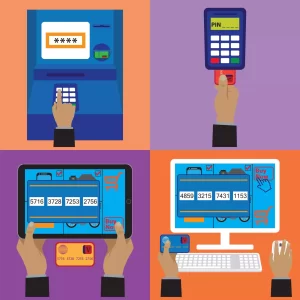Micropayments, a financial concept allowing for the seamless and affordable exchange of small sums of money, have undergone a fascinating evolution in terms of policy considerations.
Past:
In the past, the concept of micropayments faced numerous challenges due to the limitations of traditional payment systems. High transaction fees relative to the small payment amounts rendered micropayments economically unviable. This hindered the growth of digital content platforms, news websites, and other online services that could have greatly benefited from a pay-as-you-go model. As a result, during the early years of the internet, many businesses and platforms opted for alternative monetization strategies, such as advertisements or subscription-based models. These models often subsidized content by collecting user data or requiring users to commit to larger sums of money upfront.

Present:
The present-day landscape is significantly different, largely due to advancements in payment technology and shifts in consumer behavior. With the rise of digital wallets, contactless payments, and blockchain-based solutions, the cost of processing micropayments has decreased substantially. Payment gateways and fintech companies have introduced innovative solutions that enable efficient processing of small transactions at minimal costs. Furthermore, the increasing demand for a la carte digital content consumption and the desire for ad-free experiences have rejuvenated interest in micropayments. Some media outlets and content creators have successfully adopted micropayment models, allowing users to access individual articles or pieces of content at a nominal fee. This microtransaction approach offers consumers more control over their spending while supporting creators directly.
Future Prospects:
The future prospects of micropayment policies are promising, driven by technological innovation and changing market dynamics. As blockchain technology matures, decentralized micropayment systems can provide secure, transparent, and low-cost ways to process transactions, fostering an environment conducive to micropayments. Smart contracts and digital tokens could enable automated micropayments, facilitating seamless transactions for digital goods and services. Additionally, as the sharing economy and the Internet of Things IoT continue to expand, micropayments could play a vital role in enabling various peer-to-peer transactions. Devices within the IoT ecosystem could autonomously execute and settle micropayments for services such as energy consumption, data sharing, or device usage.
However, challenges persist. Regulatory frameworks need to adapt to these new transactional paradigms. Consumer protection, privacy concerns, and potential misuse must be addressed as micropayments become more widespread. Striking a balance between encouraging innovation and safeguarding users’ rights will be crucial. The evolution of 소액결제 정책 from the past to the present and the future reflects the interplay of technological advancements, consumer preferences, and regulatory considerations. What was once constrained by high transaction costs has transformed into a viable option for content consumption, digital services, and even IoT transactions. As payment systems continue to evolve and new technologies emerge, the potential for micropayments to reshape how we transact in the digital landscape remains significant. It will be fascinating to observe how policymakers, businesses, and consumers navigate this evolving financial frontier.